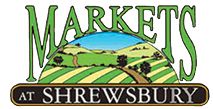One thing you’ll find in abundance on the shelves at The Markets at Shrewsbury is honey. Our vendors stock many types of honey, featuring unique flavors and an array of colors. And not just honey, but vendors selling many varieties of teas and other similar drinks as well.
Whether you’re a big tea-drinker or interested in trying something new, this blog will be the perfect guide on how to sweeten your drink to your liking. Keep reading to learn more about the best honey for tea to try along with some helpful information on honey itself.
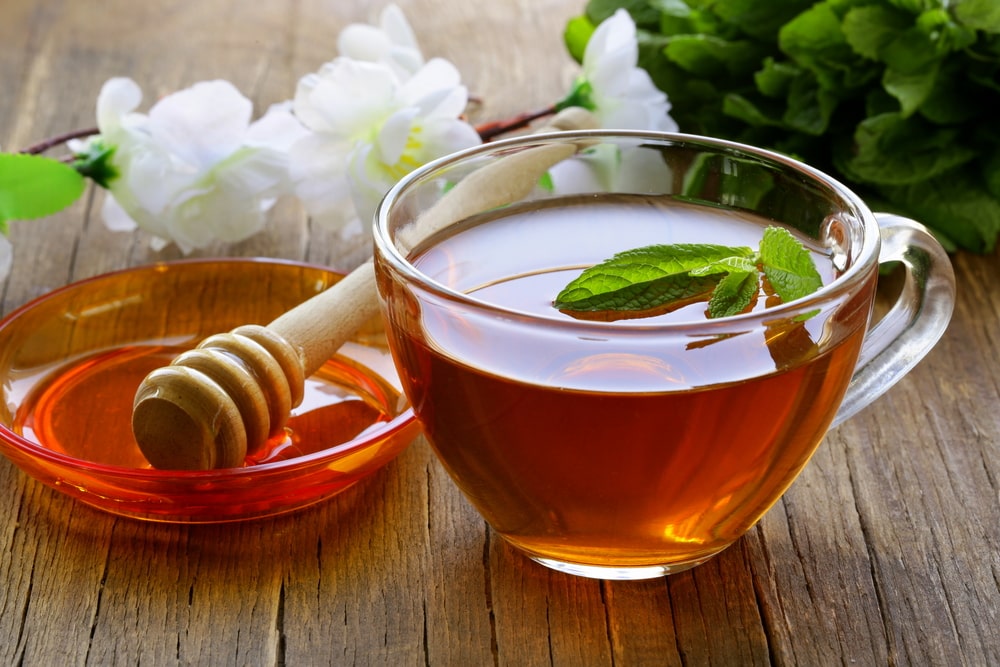
Exploring Honey Varieties By Flavor
Before we get into what tea goes with honey the best, here is some information related to honey that may be useful to understand (especially in the future for other dishes or even to take advantage of its great health benefits).
One common misconception people have about honey revolves around their flavors. Many people tend to think that honey varieties like avocado, blueberry, or lavender actually taste like the flavor their name implies.
But that’s not true, these honey varieties represent what plants the nectar was pulled from, not what they taste like.
Specific varietal flavors, clover or orange blossom, for example, are produced by bees that draw nectar from fields dedicated to growing a singular plant. The flavor and color of a varietal honey is generally consistent from brand to brand and jar to jar.
On the other hand, wildflower honey is produced by bees that collect nectar in fields where many different kinds of wildflowers grow altogether.
Because of the variety of plants that wildflower honey is drawn from, its colors and flavors are less consistent and can fall anywhere on the spectrum.
Honey Varieties By Flavor
With over 300 varieties of honey in the US, it may be hard to know where to start. Are you looking for something mild, sweet, or rich and flavorful? Use our chart below to help you decide which of the best-tasting honey varieties offer the flavor you’re looking for.
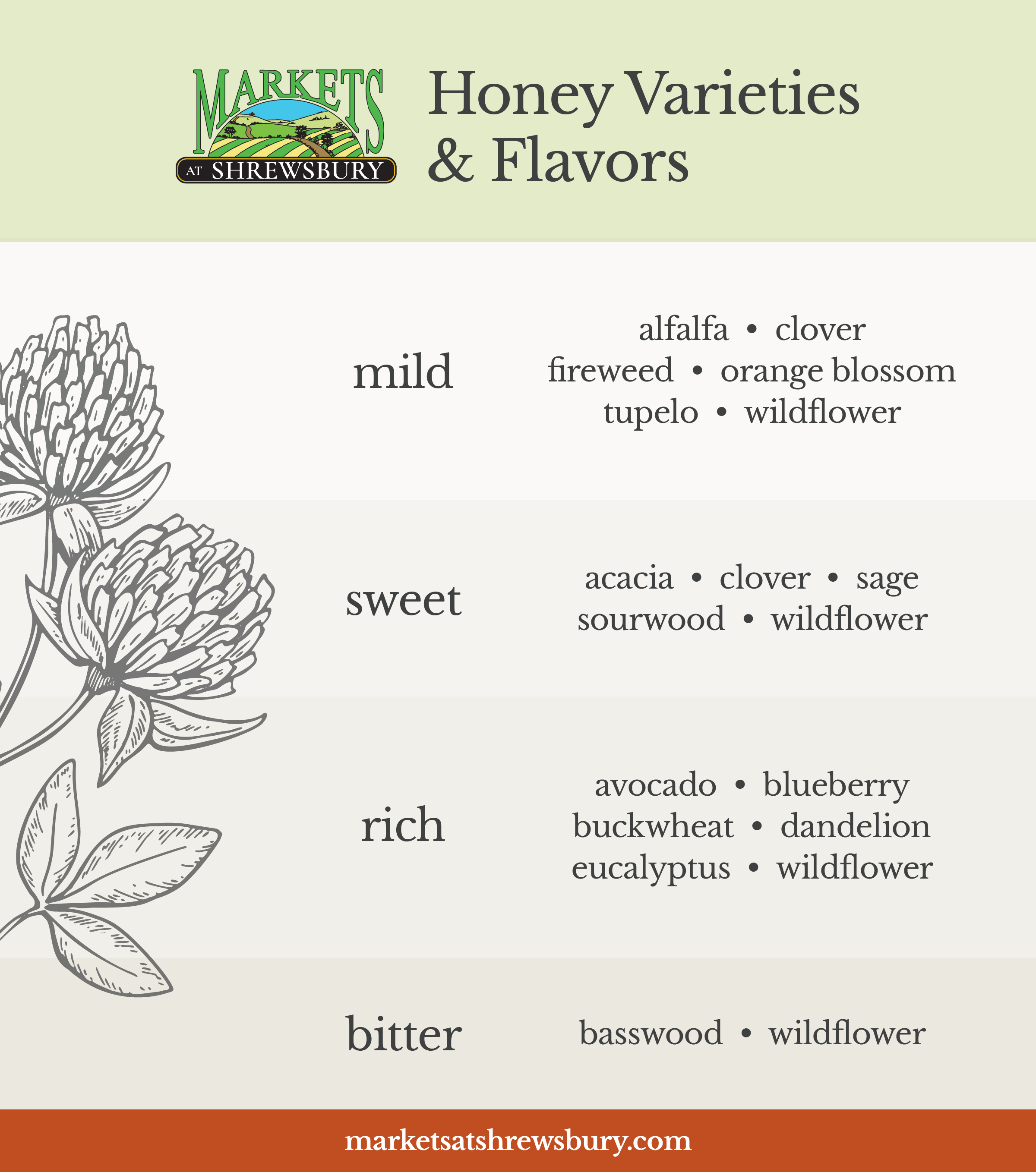
Honey varieties are categorized by flavor profile.
Which Types of Honey Are Best For
Honey can be used in so many ways. It can be a sweetener for a cup of tea, a key ingredient in many sauces and marinades, or a sugar substitute in baking. But with so many varieties to choose from, which is the best honey for each of these uses? Here are some honey pairings you may want to try.
Best Honey for Baked Goods and Tea
For a more natural and healthy product, many bakers are making the switch from sugar to honey in their baked goods. In this article, one baker shares her favorite types of honey to include in recipes. For baking, give these honey varieties a try:
- Orange Blossom
- Clover
- Wildflower
- Blueberry
- Buckwheat
Tips on replacing sugar with honey:
- Go slowly. Start by using half sugar and half honey in your recipe to see how your recipe reacts.
- Cut the amount of sweetener in half when using honey. Instead of 1 cup of sugar, use 1/2 cup of honey.
- Since honey is a liquid, you may need to adjust the other liquid measurements in your recipe.
There are hundreds of varieties of honey and probably just as many tea varieties, so the pairings are limitless. Here are a few honey and tea combinations you might want to try:
- Avocado honey with Earl Grey tea
- Clover honey with lemon or mint tea
- Tupelo honey with Jasmine tea
- Eucalyptus honey with Irish Breakfast tea
- Blueberry honey with Earl Grey or English Breakfast teas
- Orange blossom honey with black teas
- Sage honey with orange spice, lemon, or mint teas
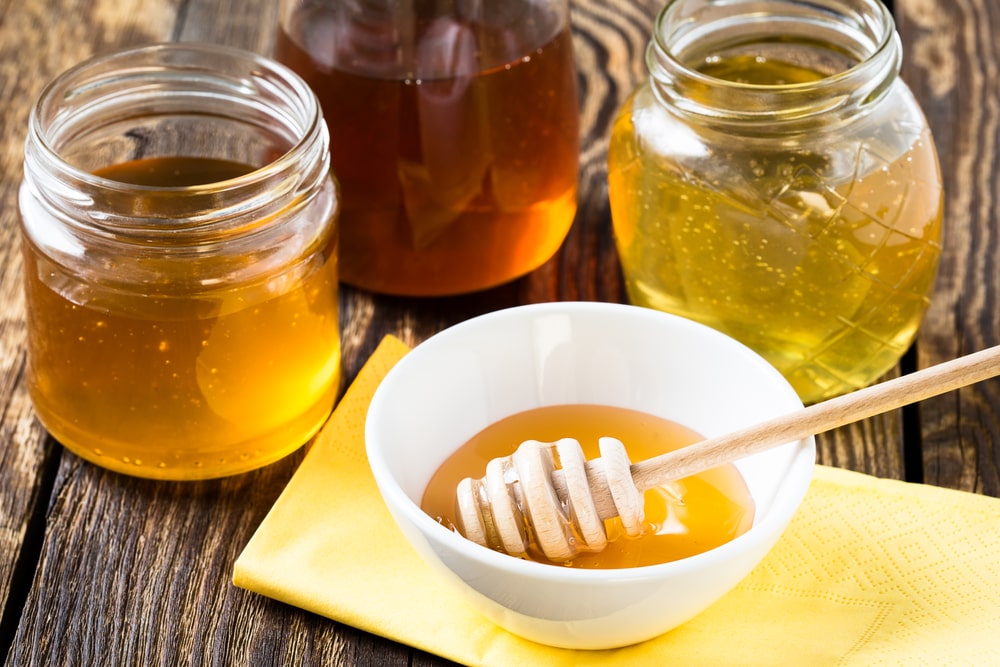
Types of Honey for Tea
Now that we know a bit more about honey itself, let’s look at what kinds of honey are best suited for your favorite (or soon to be favorite) teas.
For starters, when picking out your honey, try to ensure that it is raw honey (which hasn’t been filtered or processed in any sort of manner). Choosing honey that lacks any second-hand additives can be a healthier alternative, especially when sick.
Light Honeys vs. Dark Honeys
Another factor in honey to consider is its color. Which may not seem like a big deal, but can actually have an impact on its taste depending on what you pair it with. Just as you would when considering what kind of wine to pair with your food; sweet or dry, red or white.
As mentioned before, the characteristics of honey such as its color and texture can depend on the flower/plant the honey is collected from. As such, they can affect the taste of the honey as well.
Light Honeys for Tea
With light honeys, they are brighter in color, perhaps taking on a lighter shade of orange or even gold in the right light.
Their taste is lighter, not as potent and powerful, but a good, subtle sweetener if that is what you are looking for in your tea or drinks/food.
Dark Honeys for Tea
In regards to dark honeys, like their name suggests, they are darker in color, often resembling a deep amber or bronze hue.
Their taste is more potent, stronger, and often able to carry its distinct flavor into whatever it is added to. Research has also found that they contain a higher concentration of antioxidants, more nutrients, and other vitamins that are helpful to the human body.
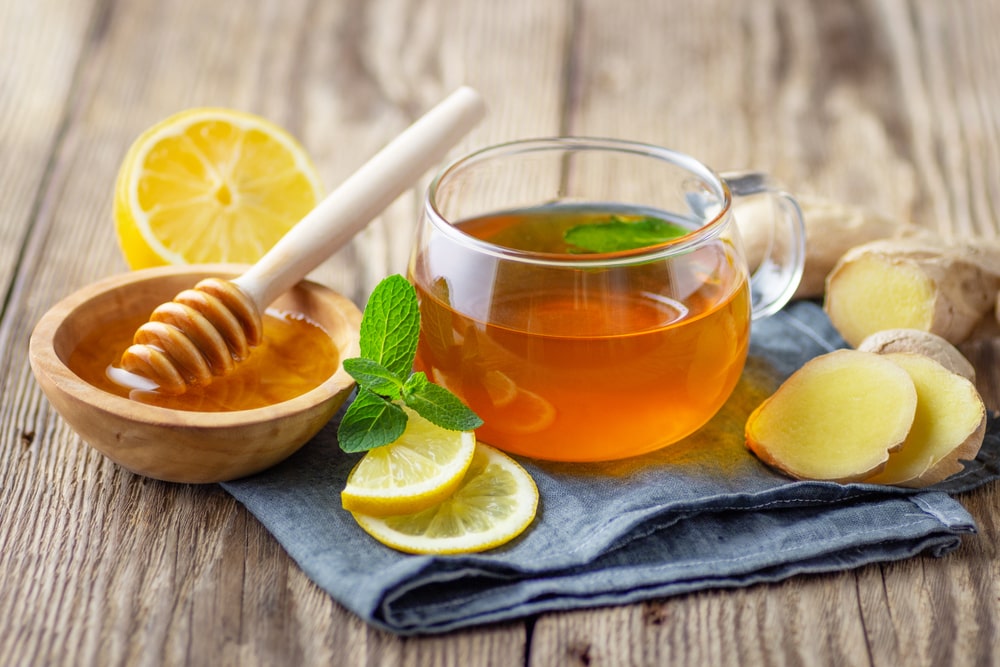
Tea with Honey Benefits
Adding honey to your tea or other warm drinks not only makes it taste better, but also comes with benefits to your health as well. These are some of the reasons why people prefer adding honey to their drinks over sugar.
Health benefits include:
- Being a natural sweetener, which is better for glucose and blood sugar levels
- Improving oral and cardiovascular health
- Soothing sore throats when sick, as the honey can help loosen the mucus build-up in the throat and be easy on the stomach to digest
- Strengthening the immune system overall
- Providing an energy boost for the body
How to Prepare a Cup of Tea with Honey
Don’t fret if you find yourself stumped on how much honey to put in tea or if there’s a specific way to prepare your cup. There is no wrong way to make the perfect cup of tea, regardless of the different kinds of tea you choose to indulge in.
Still, if you would like some basic advice on how to make your cup of tea, here are a few steps to keep in mind:
- Boil water in a kettle until it whistles (typically takes about 2-3 minutes)
- Pour into a cup, and add/steep your tea leaves/bag into the water for a few minutes
- Remove, and wait a few minutes for it to cool
- Once the tea has cooled enough, add in about a tablespoon of honey per cup of water used, and stir
- From there, add in more honey to suit your taste best
Honey and Tea Pairings
Here are some recommendations we have on the best honey for teas which are sure to become some of your favorites (or are perhaps you are familiar with):
| Best Honey for Black Tea | Best Honey for Green Tea | Best Honey for Chamomile/Herbal Tea |
| Orange Blossom | Orange Blossom | Alfalfa |
| Blueberry | Clover | Sage |
| Avocado | Avocado | Lavender |
| Buckwheat | Lavender | Wildflower |
| Chestnut | Sage | Clover |
| Sourwood | Linden | Holly |
This blog was originally published on April 25, 2018, and was updated on March 15, 2024.
